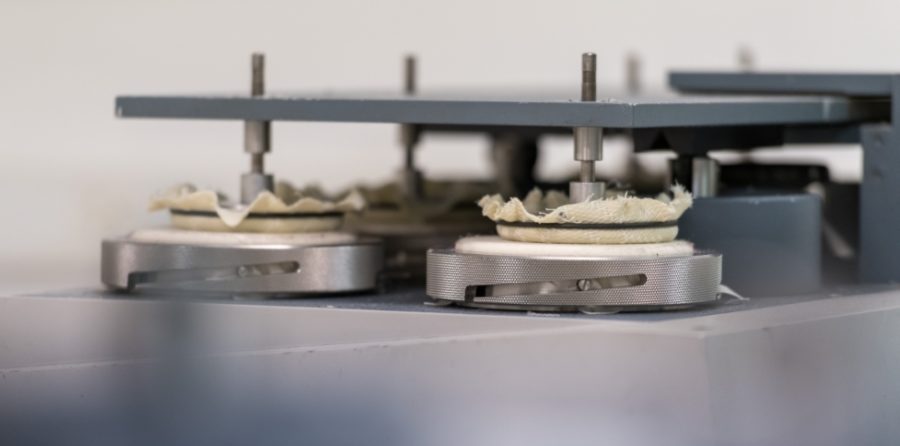
NewsInformation Center
What is the difference between abrasion resistance and hardness?
2023/10/19
In materials science, Abrasion resistance and Hardness are both important measures of material properties, with some amount of interaction between them, but with distinct differences.
Hardness:
Hardness is the ability of a material to resist external deformation, understood both as resistance to physical shape change due to localised pressure, and as the degree of difficulty in scraping and cutting.Hardness is a complex concept, which often involves other material properties such as elasticity, plasticity, viscosity and pressure distribution.
Hardness can be measured in a variety of ways, such as Brinell Hardness (BHN), Rockwell Hardness (HRC), Bartholomew's Hardness (HV) and other indicators. They have different experimental methods and application scenarios. For metallic materials, Hardness testing is often performed using an indentation Hardness test, where pressure is applied to the surface of the material and Hardness is evaluated by measuring the size of the resulting indentation.


Abrasion resistance:
Abrasion resistance, or even friction constancy, expresses the ability of a material to resist physical wear caused by motion. This property is usually related to the mechanical strength, Hardness and toughness of the material, but is not limited to these. Under certain conditions, severe wear can even initiate chemical processes such as corrosion.Abrasion resistance is an important indicator of a material's service life, especially in applications involving prolonged friction or high speeds, such as gears, bearings and tools.
Common Abrasion resistance test methods such as The Los Angeles Wear Test and Micro-Deval Wear Test simulate the friction and wear processes to which a material surface may be subjected in actual use through a specific number of cycles and impact operations.
Difference between Hardness and Abrasion resistance:
Whilst Hardness and Abrasion resistance may sometimes appear to be positively correlated - after all, harder materials theoretically tend to have better Abrasion resistance - the reality can be much more complex. Extremely hard materials may be more susceptible to brittle fracture in some cases, so Abrasion resistance is reduced instead. Alternatively, many composites or coatings may not be particularly hard, yet exhibit excellent Abrasion resistance.
In addition, Hardness is primarily concerned with the ability of a material to resist stress locally, whereas Abrasion resistance is concerned with the change in the physical condition of a material after prolonged or repeated use in the presence of external agents, especially friction. There can be some correlation between the two, but they are not equivalent. The same material with the same Hardness may have very different Abrasion resistance behaviour due to differences in toughness and structure.
Overall, Hardness and Abrasion resistance are both important indicators of material performance and are critical to engineering design and material selection. However, they describe two different physical phenomena and have their own independent testing methods and application backgrounds, and should not be confused. Researchers or engineers need to consider the more applicable performance index according to the actual application conditions when making specific material selection or design.
Previous: Learn how to maintain the entire shoe folding endurance testing machine in 3 min
N e x t : What is the lSO standard for the roughness test?



